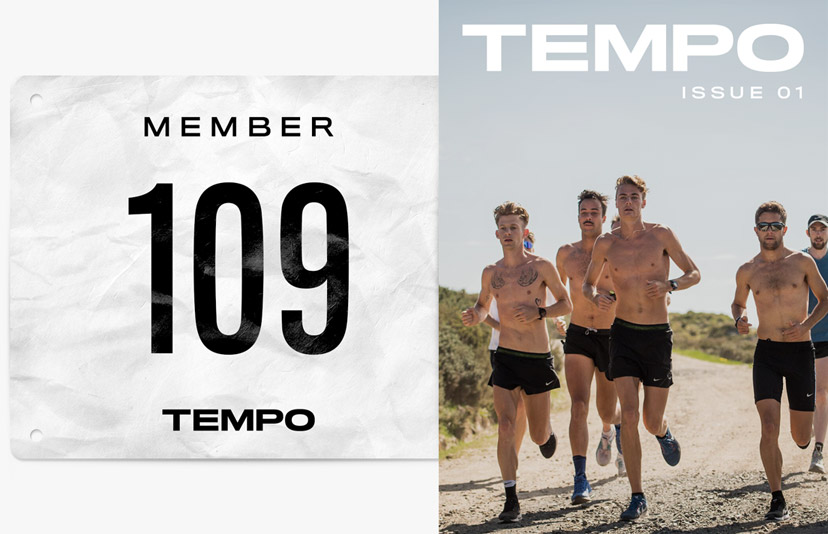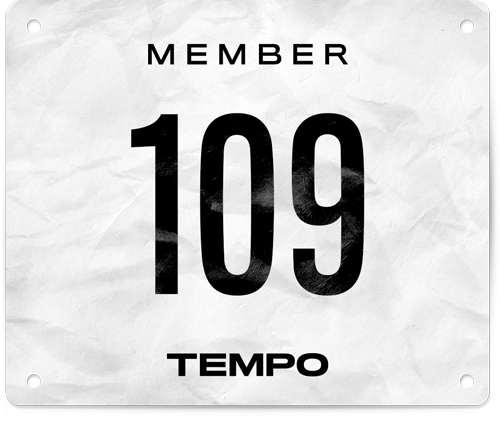Culture
Digital Dash: Running the Metaverse
How NFTs are changing running
I didn’t want to start this article off like every other article on the internet about NFTs – that is, by explaining what NFTs are – but I think it’s basically law, so here we go. NFT stands for “non-fungible token”, where “non-fungible” means they’re each unique and can’t be replicated, and “tokenising” them (we’ll get to the “them” shortly) makes them easier to be transacted.
Where you’ve most likely heard of NFTs is in the digital art world – those stories of people buying and selling JPEGs and clip art. And yes, that is absolutely happening. The best way to explain it quickly is that when someone sells an image, they’re selling the ownership rights and record of that image. So, while you can still view it and screenshot it and do the things you normally would, you don’t own it. The tangible equivalent is that everyone can own a print of the Mona Lisa, but not everyone can own the original painting.
Why would someone buy ownership of a digital image that they could just look at for free? For most, it’s for the same reasons you would buy art. As an investment, to support an artist, or, in a lot of cases, as a flex. Of course, it’s not just images people are trading; Twitter CEO Jack Dorsey sold his first tweet as an NFT for almost $US2.9 million dollars (the buyer recently tried to flip it but withdrew the offer to sell after attracting a top bid of just $US6,800).
I’d love to see some of the female leaders and future leaders of the sport, like Molly Seidel, Athing Mu and Sha'Carri Richardson, be early adopters to give other women in the space someone to watch and grow their own understanding of what this nascent tool can represent.”
Jimmy Mouton
Anyway, without going through all the examples of things that are bought and sold as NFTs, let’s talk about how they’re traded. As you can imagine, this whole industry is ripe for scammers, which is why NFTs are traded on open-source blockchain technology that basically creates an uneditable record of every transaction, ever. This is where cryptocurrency comes in as the standard payment method – but let’s not go down a crypto rabbit hole, hey?
So, let’s summarise what we’ve learnt so far. We’re talking about trading ownership of digital assets – and yes, other people can still view or save those digital assets, but true ownership can only belong to one party.
I’m so glad you asked. You may have missed it, but marathon god Eliud Kipchoge sold off a couple of NFTs in early 2021. Teaming up with Momentible, Kipchoge sold NFTs of his 2018 Berlin Marathon world record as well as his INEOS 1:59 performance from late 2019. The highest bidder of the Berlin Marathon NFT received a digital artwork and a video from Kipchoge (both of which you can view for free here). For his part, Kipchoge pocketed around $US40,000 from the sale of his two NFTs.
One of the first cases of sports highlights being sold as NFTs came through NBA Top Shot, a platform selling thousands of in-game highlights packaged up similar to digital trading cards. If you remember watching “plays of the week” segments of basketball, NBA Top Shot basically allows you to purchase those highlights.
I spoke to Jimmy Mouton, SVP of marketing at Nifty’s, one of the world’s leading NFT marketplaces (Jimmy is also a former Nike exec and is a big-time running fan), about this and whether we might see athletics go the same way.
“Sports NFTs are going through a pretty interesting period now where the best projects are attempting to evolve past strictly being digital collectibles and speculative assets. NBA Top Shot’s community grants, where they are giving funds to each team’s collector base to create new experiences together, is an example.
“But the biggest sports leagues all have some pretty tricky IP rights and regulations that are hard to untangle, so there’s a limit to what NFTs can really ‘do’ for them. For almost that exact reason, I think the sport of running is actually quite ready to find interesting use cases because – outside of Olympics, world or country championships, and world majors – there isn’t a tremendous amount of media rights that could hinder ways to deploy NFTs or other decentralised projects.
“I’d love to see smaller-format races like Orchard Street Runners in NYC or Portland Track Festival start using them for new funding models, ticketing or even rewards for participating.”
“Okay, cool. Sports highlights, got it. But what else? Are brands doing anything in the NFT space?”
Yes! Have you heard of Stepn? No, it’s not a new way of spelling your friend Stephen’s name; it’s a lifestyle app that rewards users for being active. Sort of. The hook is that users download the Stepn app, buy an NFT and then rack up credits for exercising in the real world. They can then use those points for in-game credits or cash them out for real-world financial reward.
As silly as I might find the app, Asics thinks it’s so good that they’ve partnered with Stepn on an NFT sneaker range. You guys obviously loved it too, given that trading volume at launch exceeded $US10m.
My personal take on this is that it misses the mark for runners. It might motivate non-runners who are into NFTs to start being more active, but I think running brands are better to go where the runners already are and to build loyalty and rewards around their current behaviours.
Again, I asked Jimmy for his take on this idea that brand NFTs could become better versions of loyalty programs.
“I think that’s pretty spot on – running brands (and brands in general) have different opportunities with NFTs than events, athletes, and races do … Some brands could start using them to better track who to send more personalised content and experiences to, as the holder of a certain NFT on the blockchain is quite easy to spot, whereas it is quite difficult to pinpoint everyone who bought a Brooks Ghost at their local running specialty shop.”
“What about IRL applications for NFTs?”
I’m glad you asked. At the recent Run the Bridge road race in Hobart, race director Richard Welsh offered the world’s first NFT finishers’ certificates for all participants. Welsh, who has a long history of innovating in his races, said that offering NFT finishers’ certificates felt like a natural progression.
“I loved the idea of being the first mass-participation sporting event to have digital finishers’ medals. We’ve done different things in the past around timber finishers’ medals or a battle of the sexes at one of our events, so I don’t mind being the guinea pig.
“We did a participant survey after the event to see what people wanted and it was really mixed – you still get people who want the physical medal, but I hope the digital medal take-up becomes bigger in the future. For me it’s a big environmental piece. Everyone wants a physical medal but what we don’t think about is most medals come in from overseas; they’re shipped over to races here, and there’s a lot of wastage of medals that never get handed out. There would be hundreds of thousands, if not millions, of medals around the world getting thrown out.”
Another new project on the horizon comes from Robert Smith and Nick Lo, two running-industry veterans based in Vancouver, Canada. Smith and Lo co-founded boutique running store Vancouver Run Co. and have now launched their latest venture, Run As You Are. RAYA is a community-driven art project, or an art-driven community project, depending on how you look at it. RAYA will launch initially as a series of 10 art pieces (each presenting a different character, a colourful digital cartoon depicting one of a range of running-community archetypes), and eventually expand to 5,102 characters, each of them unique. The owners of these pieces will receive a range of benefits, from exclusive access to the RAYA community and connections with brand partners to, eventually, the opportunity to participate in the world’s first metaverse marathon.
I asked Smith how he sees creativity and community coming together on the Run As You Are project, and if he thinks others will follow him and Lo into the NFT space in coming years.
“Creativity and community are two areas that we have always focused on as a natural extension of who we are. NFTs allow us to take that creativity in a familiar form (digital art) and extend our community far beyond Vancouver. As a brand, this comes naturally for us as we have always wanted to push the boundaries of running retail and community.
“Knowing that we are the first in our space to do this also means we have the freedom to engage with our community in new ways never seen before. For example, traditionally NFTs do not promote an active lifestyle and really movement in any way. With RAYA we are turning that on its head and requiring our community within Discord to engage in an active lifestyle in order to win prizes, gain access to the allowlist (in our case the RunList) and earn digital tokens to redeem for shoes and other merchandise. One of the ways we are doing this is through an integration with Strava and challenges users need to complete, like Strava art, distance challenges and more.”
Now, we may choose to ignore it, or tell ourselves otherwise, but running has enough barriers to participation without adding in pay-to-play digital communities. I asked Smith if he and Lo have thought about how they can democratise access to the community, so it doesn’t just end up limited to rich, Satisfy-wearing bros, with a lack of cultural and gender diversity.
“The key in building strong communities is sharing brand values. Unfortunately, for the vast majority of NFT communities, those values are often associated with the price of the NFTs. And as a result, this often attracts the wrong crowds.
“RAYA is not an NFT project. RAYA is a brand, and we happen to be utilising NFTs to build our community through an aligned vision of diversity and inclusion. As long as we stay true to our values, we will attract the right communities who want to build the future together with us.
“In addition, we are fully committed to provide ample opportunities for those who may not normally have access to NFTs both from an education standpoint and from a resource perspective. By joining our community early and being an active participant, you will have the chance to win a RAYA NFT or mint at a reduced price. We are also hosting free webinars and meetups to further educate our community on NFTs to teach them about the technology.”
The part about inclusion is kind of where I get stuck on NFTs, so to hear what Smith and Lo are doing around diversity and inclusion is reassuring. For the last word, I also asked Jimmy for his take on how the NFT industry can combat an already present gender gap.
“This is for sure a challenge in the NFT space. And I certainly wish I had an answer, as the technology and industry will have very limited growth and adoption if you can’t bring half the population to the table … However, in a similar vein to the first topic, I think running IS in a unique spot, in that it is one of the more progressive sports in terms of gender equity (although it’s far from perfect) when it comes to promoting female athletes and competition. I’d love to see some of the female leaders and future leaders of the sport, like Molly Seidel, Athing Mu and Sha'Carri Richardson, be early adopters to give other women in the space someone to watch and grow their own understanding of what this nascent tool can represent.”
So, there you have it. A primer on NFTs in running. What’s your take? Into it, not into it? Like everything surrounding NFTs at the moment, some of it’s good, some of it seems kinda pointless, and some of it is a money pit. Good luck.


